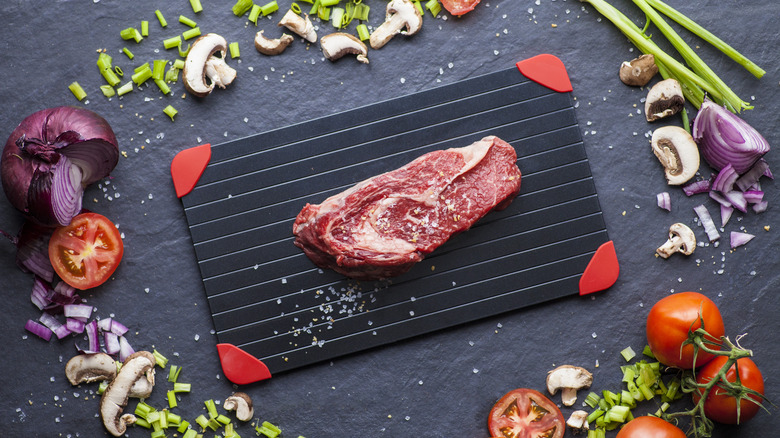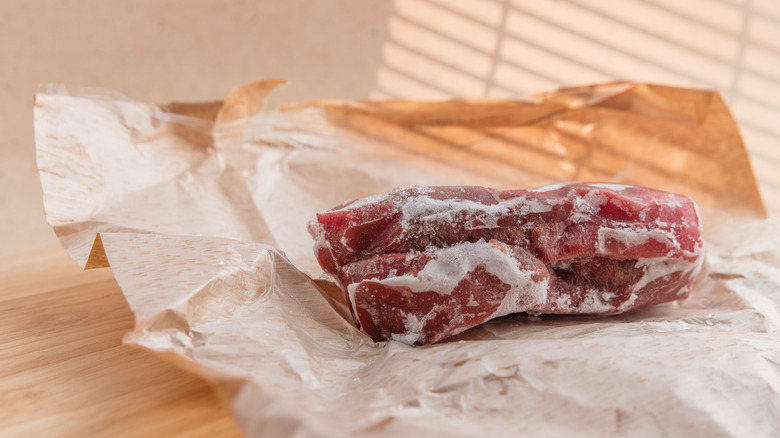Do Defrosting Trays Really Help Thaw Your Steaks Faster?
We may receive a commission on purchases made from links.
Nothing is quite as disappointing as realizing you forgot to thaw out your steaks when going to make dinner. Fortunately, a blast from the past has been gaining attention online as a quick and easy way to thaw meat. Now, if you grew up in the '80s or '90s, you might have seen infomercials for defrosting trays, boasting about how they can thaw out anything in a jiffy. Well, these vintage creations have now found their way to TikTok and have been making a comeback. But do they actually work?
First, the science. In theory, defrosting trays work pretty well. Made of materials like aluminum or copper, they are excellent conductors of heat, allowing them to cool down and heat up fairly quickly. When it comes to thawing, these trays work via heat transfer. Room-temperature heat from the tray is passed into the meat as the colder temperatures are dispersed through the metal. It's basic thermodynamics. Unfortunately, defrosting trays tend to be hit or miss when put to the test.
One common test we've found is melting an ice cube on one of these defrosting trays and comparing it to an ice cube melting on a counter. This test confirms that ice placed on the trays does melt exceptionally fast. However, the problem is that these results don't accurately represent what happens with a piece of meat. Unlike ice, which melts and exposes new layers to the conductive surface, meat doesn't melt (fortunately), so the heat transfer isn't as fast. So, while many of these trays claim to thaw steaks in about an hour, unless you're thawing a really thin steak, you're unlikely to gain much benefit from using a defrosting tray.
Defrosting trays can be more dangerous than beneficial
One of the most significant issues with defrosting trays is that if you place a steak on it to thaw and it doesn't thaw quickly enough, you'll have a food safety issue. The USDA states that there are only three safe ways to thaw foods: in the microwave using the defrost setting, in a bag submerged in cold water, or in the refrigerator. These methods ensure that meat doesn't enter the danger zone where dangerous bacteria can begin to grow and multiply. They also state that food should never be thawed on the counter at room temperature as bacteria can begin multiplying as soon as the surface is above 40 degrees Fahrenheit.
One example of how this impacts meat on a defrosting tray is described by Rochelle Bilow from The Kitchn, who tested the Evelots Defrosting Tray for herself. In her experiment, Bilow attempted to thaw a chicken breast, but after an hour, it still wasn't thawed and, at that point, was entering the danger zone, so the test was abandoned. However, in a similar test from Allrecipes, a chicken breast was thawed using the XWell Quick Defrosting Tray in an hour and 10 minutes. While the tray seemed to do a decent job in this instance, over an hour at room temperature is still questionable in regard to food safety.
If you really want to test the effects for yourself and thaw a steak fast, you can make your own pseudo-defrosting tray using an aluminum cookie sheet placed on a cooling rack to allow air circulation. Really, any thick sheet of copper or aluminum will have a similar effect, including a copper pan or aluminum griddle.

